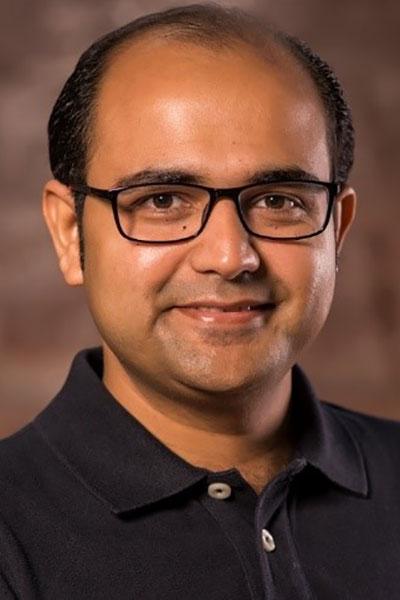Yusuf A. Sambo and Muhammad A. Imran, University of Glasgow, Scotland, David Crawford and Robert Stewart, University of Strathclyde, Scotland, and Stephen Speirs, Cisco Systems, Scotland
Published: 9 Dec 2019

CTN Issue: December 2019

A note from the editor:
Internet for all has become indispensable need for today’s human race. We know that high capital expenditure and operational expenses has been a big NO for MNOs to facilitate the global mandate of universal connectivity. 5G wireless can enhance the wireless capacity, expand the geographical coverage and improve the internet reliability for remote or sparsely populated areas as well where infrastructure may not be available or expensive to deploy. However, wireless technology alone may not be able to leverage the connectivity in rural or sparsely populated areas and guarantee the global connectivity. New business models including integration of virtual infrastructure with the physical one, self-organizing networks, flying platforms and TV White Space etc are few emerging trends to address the global connectivity problems.
In this article, Yusuf Sambo, Muhammad Ali Imran, David Crawford, Robert Steward and Stephen Speirs present the UK rural connectivity challenges and future perspectives. This article also presents some interesting findings, views and further advancements from UK Department for Digital, Culture, Media and Sport (DCMS) funded project 5G RuralFirst.
Enjoy!
Editor

Expanding Rural Coverage: Opportunities and Challenges in the UK



David Crawford

Robert Stewart

The availability of the internet and on-line connectivity has changed the way we study, work, access information, communicate, conduct business and even socialize. However, even as mobile and wireless communication deployment continues to grow, universal coverage is still a challenge. Ofcom, the UK telecommunications regulator, in its Summer 2019 Connected Nations report [1], noted that about 9% of the UK landmass, which comprises of the nations of England, Wales, Northern Ireland and Scotland, did not have mobile data coverage from any of the four incumbent operators, with only 66% of the UK geographic area being covered by all mobile operators. It is worthy of note that Ofcom defines data coverage as a connection with a speed of at least 2 Mbps. The report also tells us that parts of the UK with more rural and sparsely populated areas tend to have poorer or no data coverage - only 2% and 17% of England suffer from no and partial mobile data coverage, respectively, compared to 18% and 59% in Scotland. Unfortunately, unconnected populations are highly disadvantaged as they are cutoff from the digital economy, excluded from e-public services and have fewer opportunities compared to their connected peers [2]. It is no surprise that the United Nations Special Rapporteur report on the promotion and protection of the right to freedom of opinion and expression declared the Internet as “an indispensable tool for realizing a range of human rights” and made several recommendations to facilitate access to the internet for all [3]. Figure 1 shows the outdoor data coverage spread amongst nations of the UK.
![Figure 1: Outdoor data coverage spread among nations of the UK [1]](/sites/default/files/styles/400wide/public/images/2019-2019-12/CTN-December-2019b-Figure-1.png?itok=TGqaPLnW)
The trend with all generations of mobile communication systems, including 5G, is to concentrate early deployment in urban areas and later on expanding coverage to suburban areas based on demand, with sparsely populated rural areas coming on much later, if at all. This approach has been effective in allowing Mobile Network Operators (MNOs) to run commercially sustainable networks. However, the unfavourable cost-benefit scenario of rural deployment remains the biggest obstacle towards achieving universal coverage. High deployment costs and lower returns mean MNOs have less incentive to provide coverage in rural areas [4].
Rural connectivity cannot be solved by technology alone – provider business models need to be re-examined and have to take advantage of the “bigger picture” of rural connectivity. With traditional MNO business models being built upon a mainly consumer mindset, it is clear that the new innovative business models for rural areas have to consider the broadest set of opportunities available in rural areas – particularly services for key local industries, including public services like health, key local employers such as agriculture, aquaculture and whisky, broadcasting and tourism – the so-called “enterprise 5G” use cases. Hence, the rural connectivity business model mindset has to combine consumer and business services: in particular, it is incumbent on MNOs to engage local industries to understand how they can develop differentiated connectivity offers to help deliver value and the revenue required to make a sustainable and win-win business case.
Use Cases of Rural Connectivity
Certain industries, especially agriculture and utilities such as renewable wind energy, are typically sited in rural areas due to the availability of large swathes of land and providing connectivity in these areas would support vertical industries and serve as new revenue streams for MNOs. This would lead to increased productivity for the vertical industries and revenue for the MNOs, as well as stimulate the economy, in addition to bridging the connectivity gap [5].
- Agritech: Providing data connectivity in rural areas can aid Agritech in terms of precision farming, using sensors to monitor soil content/composition, crop and animal health as well as measure farm produce quality. Irrigation, machine synchronization and fleet management would also benefit from wireless communication solutions supported by data connectivity.
- Smart energy: Given that renewable energy such as solar and wind farms are often placed in rural areas due to their space requirements, connectivity would allow for real-time data exchange among sensors in electricity generating plants and transmission network as part of the smart grid. This would ensure better network monitoring and performance optimisation, resulting in improved productivity.
- Healthcare: The availability of reliable connectivity would improve healthcare delivery in rural areas by supporting services such as access to online patient records, e-diagnosis, remote patient monitoring and video consultation. Self Organised Networks (SON) enabled pop-up networks could be used to provide temporary coverage to support medical outreach teams on scheduled visits to unconnected communities to deliver the aforementioned services.
Expenditure Challenges
Rural coverage typically comes with higher Capital Expenditure (CAPEX) and Operational Expenditure (OPEX) compared to urban and suburban areas due to accessibility of cell sites and the lack of enabling infrastructure. The main cost drivers for rural deployment include installation works, backhaul, power and security.
- Installation works: The lack of existing infrastructure and challenging terrains make the installation cost of cell sites in remote and rural areas considerably higher. Moreover, the transportation costs associated with deployments in these areas are substantially higher as personnel, equipment and installation machinery would have to be moved over long distances during the deployment phase of the network.
- Backhaul: The cost of providing a suitable and reliable backhaul to connect the cell sites to the core network is often significantly higher in rural areas. Relying on fiber and microwave networks is expensive if fiber cables have to be laid to each cell site and there are logistical challenges of designing and deploying a microwave backhaul network. Obviously, these are not cost-effective options given the remoteness and the large expanse of land in rural areas to cover, which forces MNOs to look towards alternatives including satellite links for backhaul. Nevertheless, the cost of maintaining the backhaul network is also higher for rural deployments.
- Power: The availability of adequate and stable power is critical for reliable rural coverage. Rural cell sites are often too remote to be connected to the electricity grid and, as such, MNOs rely on alternative sources of power such as large farms of renewable energy plants to power both the base station equipment and the cooling system. Thus, the provisioning of adequate power supply for rural deployment comes with significant CAPEX and OPEX implications, given the high costs associated with connecting the cell site to the grid or setting up a power plant, as well as the costs of running the power plant.
- Security: The security of cell sites against theft and vandalism can sometimes have higher cost implications in rural deployments. Given their remote locations, rural cell cites often require a perimeter fence and a room to shield equipment against the weather and security threats, as well as security personnel to guard the sites. These result in higher CAPEX and OPEX when compared to urban and suburban deployments.
The GSMA reports in [6] that there is about 18% and 35% increase in the cost of rural and remote deployments, respectively, compared to urban deployment mainly due to the limited infrastructure. GSMA defines rural areas as low population density areas having basic communication infrastructure (limited capacity backhaul and power) and remote areas as sparsely populated areas with “extremely limited infrastructure”. Table I shows the percentage increase in the cost of rural and remote deployments over urban deployment for equipment & installation, backhaul and power supply.
Table I: Increase in costs of rural and remote deployments over urban [6]
| Urban areas | Rural areas | Remote areas | |
| Equipment & installation | 60% | + 10% | + 13% |
| Backhaul | 30% | + 8% | + 11% |
| Power | 10% | + 0% | + 11% |
| Total | 100% | + 18% | + 35% |
How SON Can Aid Rural Connectivity
The recent paradigm shift towards Software Defined Networks (SDN) and Network Function Virtualisation (NFV) as well as the advancement of semiconductor technology over the years have enabled the implementation of both core and radio access parts of the network in software using general purpose processors. This has resulted in a considerable reduction in the cost of network equipment as opposed to using proprietary hardware. Open source platforms such as Open Air Interface [7], 5G-EmPOWER [8] and srsLTE [9] are available as alternatives to relatively more expensive commercial solutions and could be used to reduce the cost of rural deployment. Moreover, ‘softwarization’ brings about the much-needed flexibility to design SON algorithms that have the ability to autonomously manage themselves with minimal human intervention [10]. Accordingly, SON is a promising concept for tackling some challenges of rural connectivity by speeding up the configuration of new base stations, as well as autonomously optimizing the network during operation and healing it in the event of faults to minimize downtime. This would significantly improve network resilience and minimise the personnel costs associated with deploying and running rural networks, resulting in expenditure savings for MNOs.
The Role of Policy in Enabling Rural Connectivity
Regulators have a key role to play in terms of policy formulations and providing incentives to enable rural connectivity. In March 2018, the Scottish Government launched the 4-year £25 million 4G Infill programme to improve rural connectivity by building 45 new masts in rural areas for commercial MNOs to utilize. Ofcom, in July 2019, introduced spectrum sharing allowing access to spectrum in areas where the primary holders have no coverage [11]. With this new arrangement and for a small fee, other parties, such as unconnected communities or councils can acquire temporary license to deploy and run their own networks.
In 2013, Ofcom imposed coverage obligations under the terms of O2’s 4G/800 MHz license to provide indoor data coverage to a minimum of 98% of all UK premises by the end of 2017. Ofcom has confirmed O2’s compliance with the indoor coverage obligation and is further proposing new rules that will see two winners of the next round of 5G spectrum auction commit to expand their 4G coverage to 90% of the country’s landmass in return for discounts on spectrum. However, the UK mobile network operator, ‘Three’, is of the opinion that this approach would only reduce partial network coverage in about 6% of the country without significantly improving coverage in total not-spots [12]. Last May, the UK’s four MNOs agreed to consider the sharing each others infrastructure with the possibility of setting up a single rural network to solely focus on improving coverage in total not-spots [13]. However, this is contingent on Ofcom removing the 90% coverage obligation attached to the 5G spectrum auction, and is under review and discussion with the UK Government and operators.
Conclusion
There have been concerted attempts over the years to address the issue of rural coverage, including the use of high altitude balloons and drones [14], as well as making available TV white space spectrum [4] that can cover long distances to reduce the number of cell sites required for rural deployment. A recent project that is dedicated on rural mobile and wireless connectivity is the UK Department for Digital, Culture, Media and Sport (DCMS) funded 5G RuralFirst project, which focuses on making a business case for rural connectivity by showcasing the use cases of 5G in rural areas [15]. Some of the outcomes of 5GRuralFirst, have led to rural areas of the UK being among the first locations to have 5G deployed with Agritech, industrial IoT and broadcasting use cases trialed in Shropshire, Somerset and notably the north of Scotland Orkney Islands 5G network deployment. The 5G RuralFirst project use cases have shown how data coverage can unlock new opportunities for rural economies and improve productivity and efficiency of rural industries.
References
- “Connected Nations Update,” Ofcom, Tech. Rep., May 2019. [Online]. Available: https://www.ofcom.org.uk/__data/assets/pdf_file/0021/146613/connected-nations-update-spring-2019.pdf
- M. Buckwell and F. Liberatore, “Enabling rural coverage. Regulatory and policy recommendations to foster mobile broadband coverage in developing countries,” GSM Association, Tech. Rep., Jan. 2018. [Online]. Available: https://www.gsma.com/mobilefordevelopment/wp-content/uploads/2018/02/Enabling_Rural_Coverage_English_February_2018.pdf
- "VI. Conclusions and recommendations", Report of the Special Rapporteur on the promotion and protection of the right to freedom of opinion and expression, Frank La Rue, Human Rights Council, Seventeenth session Agenda item 3, United Nations General Assembly, May 2011
- S. Agarwal and S. De, "Rural Broadband Access via Clustered Collaborative Communication," in IEEE/ACM Transactions on Networking, vol. 26, no. 5, pp. 2160-2173, Oct. 2018.
- “Forging Our Digital Future With 5G: a Strategy for Scotland”, Scottish Government, Rep. Aug. 2019. [Online]. Available: https://www.gov.scot/publications/forging-digital-future-5g-strategy-scotland/
- M. Karlsson and G. Cruz, “Rural connectivity innovation case study: Using light sites to drive rural coverage - Huawei RuralStar and MTN Ghana,” GSM Association, Tech. Rep., 2018. [Online]. Available: https://www.gsma.com/mobilefordevelopment/wp-content/uploads/2019/02/Huawei_RuralStar_MTN_Ghana_Rural_Innovation_Connectivity_Case_Study_Nov18.pdf
- F. Kaltenberger, G. d. Souza, R. Knopp and H. Wang, "The OpenAirInterface 5G New Radio Implementation: Current Status and Roadmap," in Proc. 23rd International ITG Workshop on Smart Antennas, Vienna, Austria, 2019, pp. 1-5
- E. Coronado, S. N. Khan and R. Riggio, "5G-EmPOWER: A Software-Defined Networking Platform for 5G Radio Access Networks," in IEEE Transactions on Network and Service Management, vol. 16, no. 2, pp. 715-728, June 2019
- I. Gomez-Miguelez, et al., "srsLTE: an open-source platform for LTE evolution and experimentation", in Proc. 10th ACM International Workshop on Wireless Network Testbeds Experimental Evaluation and Characterization, Oct. 2016
- P. V. Klaine, M. A. Imran, O. Onireti, and R. D. Souza, “A Survey of Machine Learning Techniques Applied to Self-Organizing Cellular Networks,” IEEE Communications Surveys Tutorials, vol. 19, no. 4, pp. 2392–2431, Jul. 2017
- “Enabling wireless innovation through local licensing: Shared access to spectrum supporting mobile technology,” Ofcom, Tech. Rep., Jul. 2019. [Online]. Available: https://www.ofcom.org.uk/__data/assets/pdf_file/0033/157884/enabling-wireless-innovation-through-local-licensing.pdf
- “Three’s response to Ofcom’s consultation on the Award of the 700 MHz and 3.6 -3.8 GHz spectrum bands,” Three, Tech. Rep., Mar. 2019. [Online]. Available: https://www.ofcom.org.uk/__data/assets/pdf_file/0024/143493/three.pdf
- C. Williams, “The end of the ’not spot’? mobile companies to share masts to improve rural signal.” [Online]. Available: https://www.telegraph.co.uk/business/2019/03/31/bid-boost-rural-mobile-coverage/
- H. C. Nguyen, R. Amorim, J. Wigard, I. Z. KováCs, T. B. Sørensen and P. E. Mogensen, "How to Ensure Reliable Connectivity for Aerial Vehicles Over Cellular Networks," in IEEE Access, vol. 6, pp. 12304-12317, 2018
- https://www.5GRuralFirst.org/
Statements and opinions given in a work published by the IEEE or the IEEE Communications Society are the expressions of the author(s). Responsibility for the content of published articles rests upon the authors(s), not IEEE nor the IEEE Communications Society.


